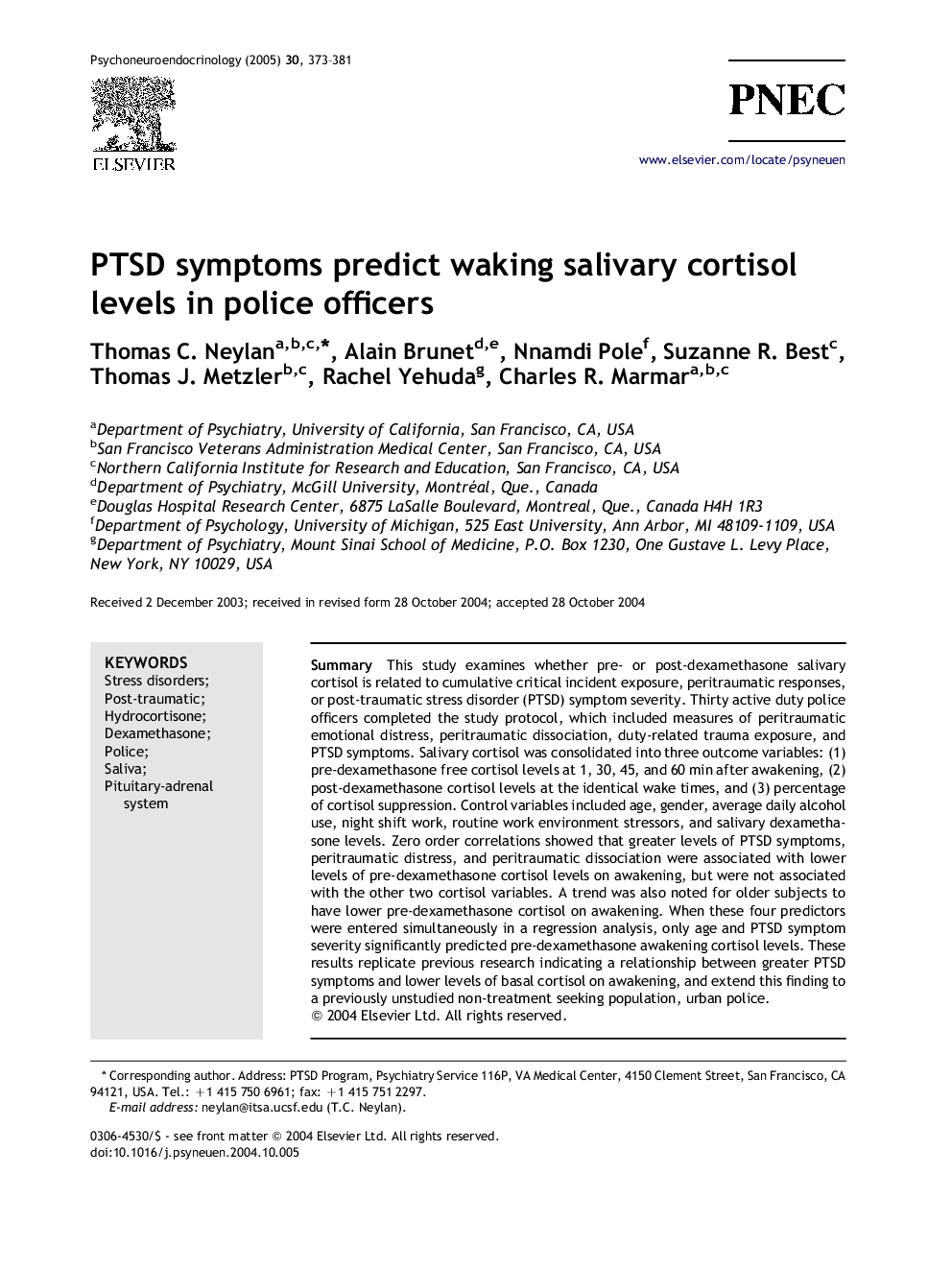| کد مقاله | کد نشریه | سال انتشار | مقاله انگلیسی | نسخه تمام متن |
|---|---|---|---|---|
| 10306842 | 547510 | 2005 | 9 صفحه PDF | دانلود رایگان |
عنوان انگلیسی مقاله ISI
PTSD symptoms predict waking salivary cortisol levels in police officers
دانلود مقاله + سفارش ترجمه
دانلود مقاله ISI انگلیسی
رایگان برای ایرانیان
کلمات کلیدی
موضوعات مرتبط
علوم زیستی و بیوفناوری
بیوشیمی، ژنتیک و زیست شناسی مولکولی
علوم غدد
پیش نمایش صفحه اول مقاله

چکیده انگلیسی
This study examines whether pre- or post-dexamethasone salivary cortisol is related to cumulative critical incident exposure, peritraumatic responses, or post-traumatic stress disorder (PTSD) symptom severity. Thirty active duty police officers completed the study protocol, which included measures of peritraumatic emotional distress, peritraumatic dissociation, duty-related trauma exposure, and PTSD symptoms. Salivary cortisol was consolidated into three outcome variables: (1) pre-dexamethasone free cortisol levels at 1, 30, 45, and 60Â min after awakening, (2) post-dexamethasone cortisol levels at the identical wake times, and (3) percentage of cortisol suppression. Control variables included age, gender, average daily alcohol use, night shift work, routine work environment stressors, and salivary dexamethasone levels. Zero order correlations showed that greater levels of PTSD symptoms, peritraumatic distress, and peritraumatic dissociation were associated with lower levels of pre-dexamethasone cortisol levels on awakening, but were not associated with the other two cortisol variables. A trend was also noted for older subjects to have lower pre-dexamethasone cortisol on awakening. When these four predictors were entered simultaneously in a regression analysis, only age and PTSD symptom severity significantly predicted pre-dexamethasone awakening cortisol levels. These results replicate previous research indicating a relationship between greater PTSD symptoms and lower levels of basal cortisol on awakening, and extend this finding to a previously unstudied non-treatment seeking population, urban police.
ناشر
Database: Elsevier - ScienceDirect (ساینس دایرکت)
Journal: Psychoneuroendocrinology - Volume 30, Issue 4, May 2005, Pages 373-381
Journal: Psychoneuroendocrinology - Volume 30, Issue 4, May 2005, Pages 373-381
نویسندگان
Thomas C. Neylan, Alain Brunet, Nnamdi Pole, Suzanne R. Best, Thomas J. Metzler, Rachel Yehuda, Charles R. Marmar,